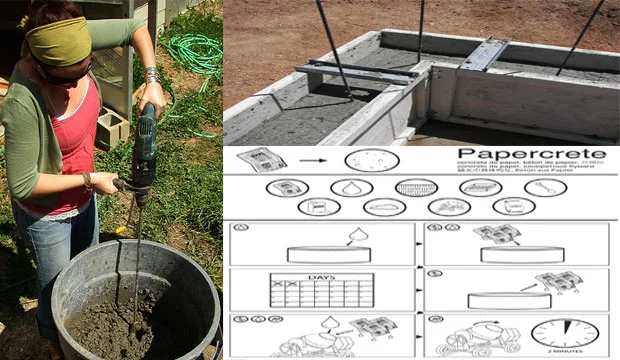The importance of concrete in the construction industry is increasing by leaps and bounds. Apart from concrete, there is no other such building material available that is strong and reliable enough to use in building construction. Yet here we are discussing a new construction method Papercrete.
Definition of Papercrete:
There are numerous processes available to compose construction material from paper. The generic term for the method described here is “papercrete”. There are a number of differences of papercrete like fibrous concrete or fibercrete, fibrous cement, padobe and fidobe. To know more about these variations click here.
Papercrete is itself a tricky term, which looks as ifs to imply a combination of paper and concrete, hence papercrete. Papercrete may be mixed using a lot of methods. Papercrete construction mainly produced using waste paper for affordable, sustainable housing. According to construction experts, different types of papercrete consist of 50-80 percent waste paper. To date, there are no specific rules of waste paper usage in papercrete but recommended principles will be released in the future beyond doubt. The basic elements are water and all but any kind of paper. Cardboard, glossy magazine stock, advertising brochures, junk mail, or just about any other type of paper is up to standard for papercrete construction. Newsprint is deserved to be the best in business for papercrete.
Portland cement, sand, dirt, clay, glass, or even “fly ash” are papercrete additives. Builders can also use powdered glass, rice hull ash, Styrofoam, and other additives.
Pros and Cons of Papercrete:
- Paper waste recycling
- Lessens quantity of concrete in build
- Lighter building components is more safe and easy on body to work with
- For DIY (do it yourself) users, it is a good project
- Minimal equipment is needed to make your own bricks
- Quick learning procedure
- Lends itself to curvy, artistic expression
- Papercrete brick manufacturers have emerged
- Lite weight only entails a 2inch concrete pad for a foundation
- Tech. reports now exist
- Appropriate for hot/arid ambiance
- Non-resistance to water
- Construction crews are less interested in this construction method
- No specific construction codes not yet published for this method
- Inappropriate for the rain forest or wet climates

